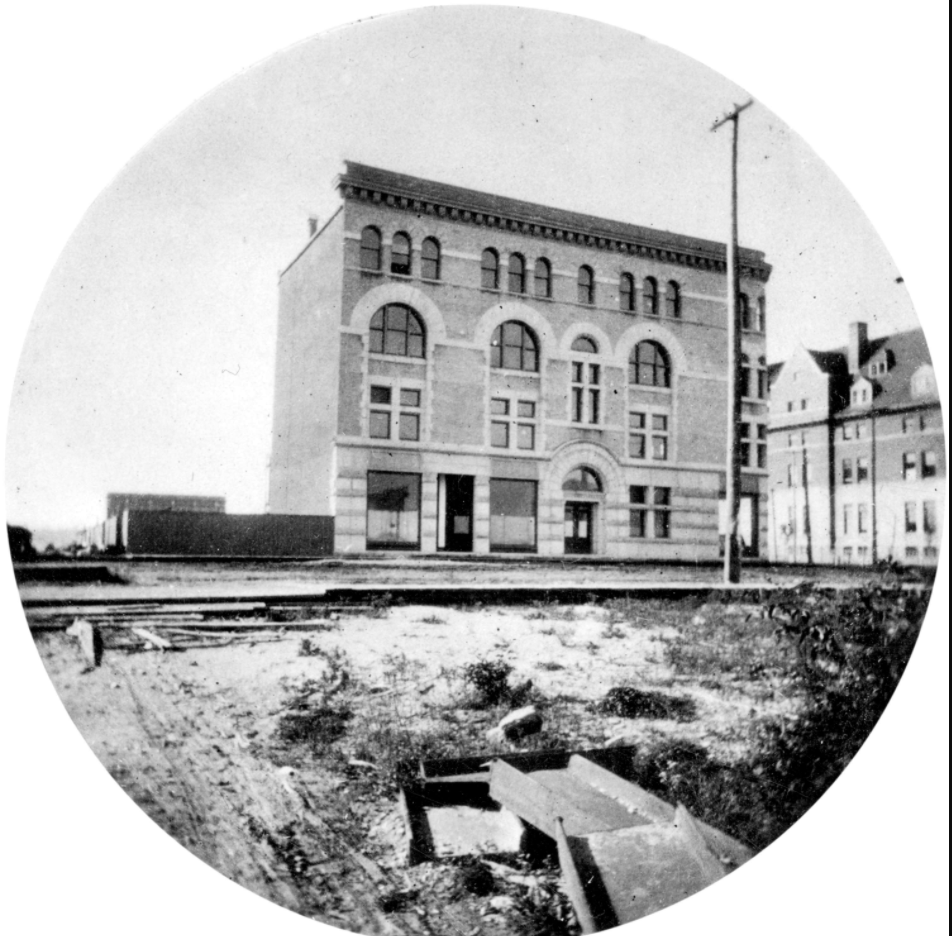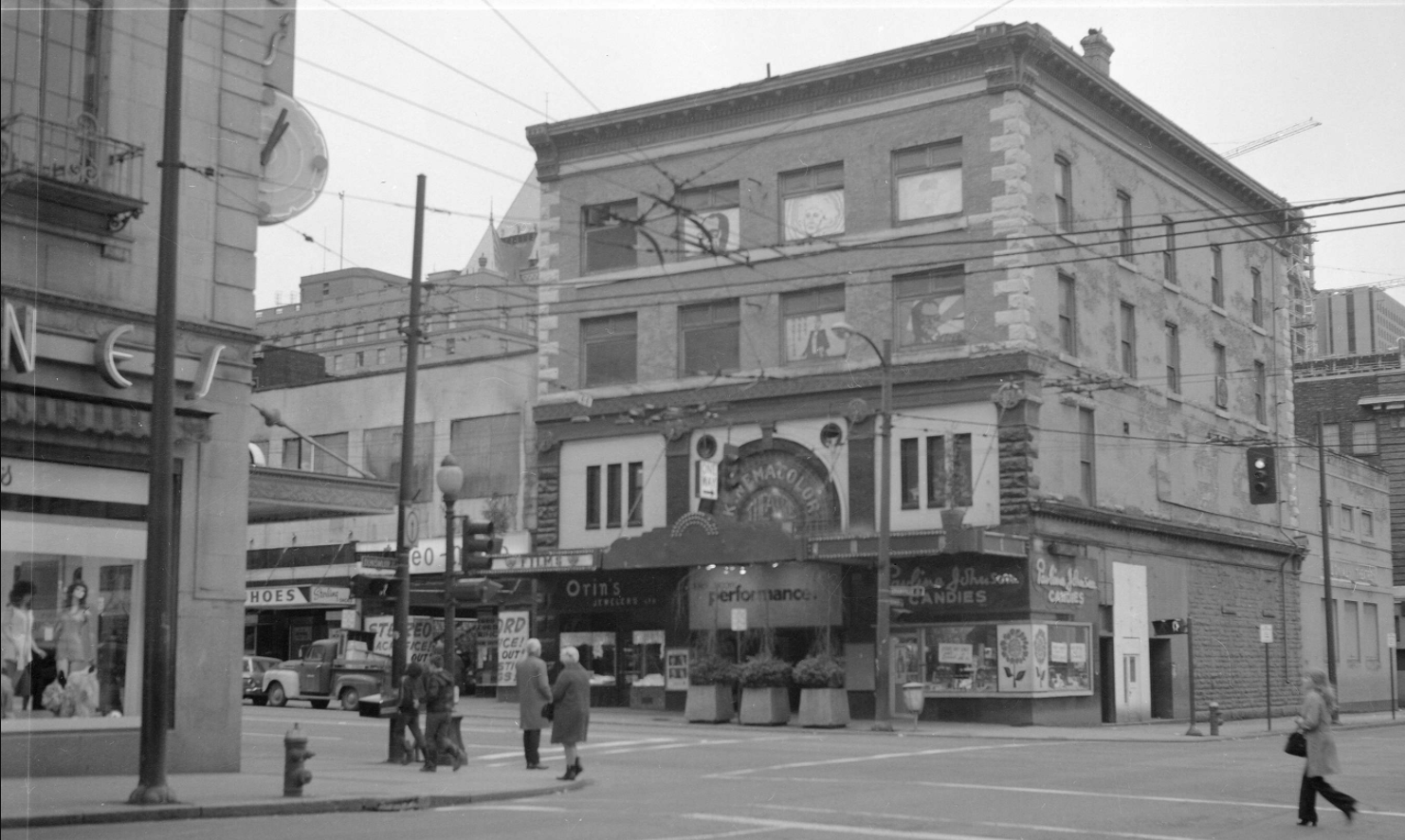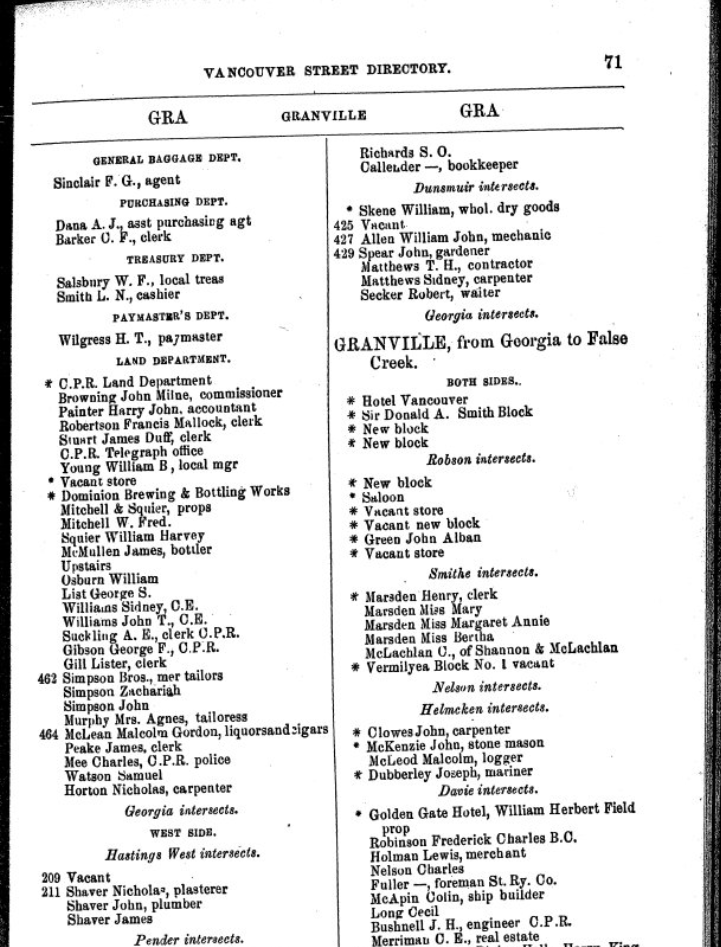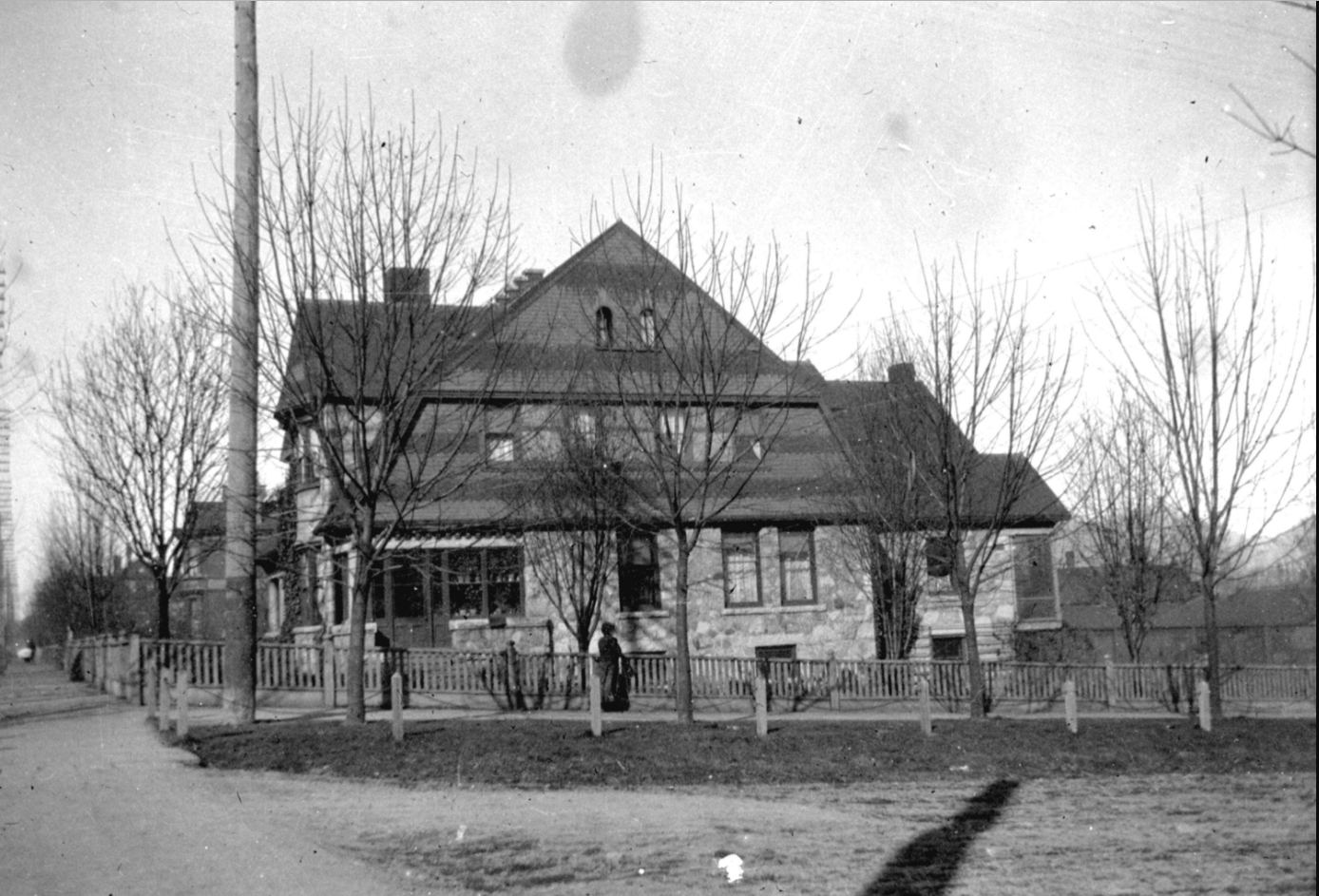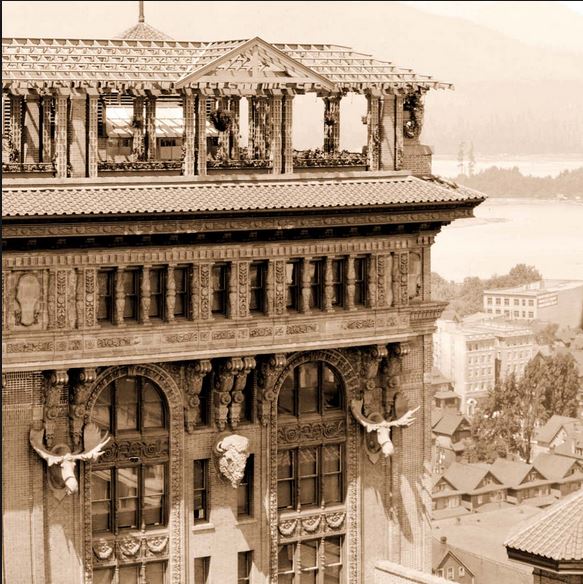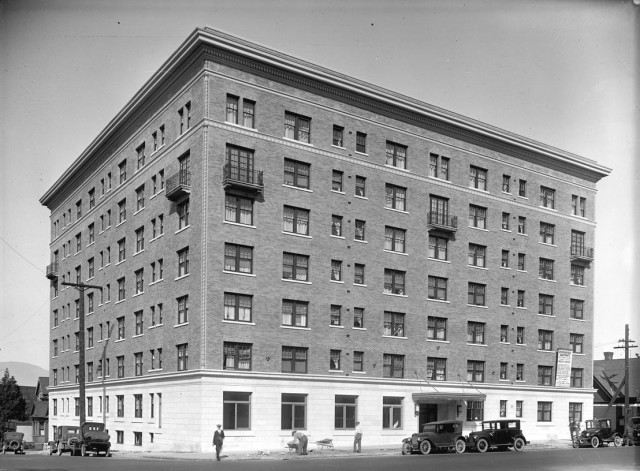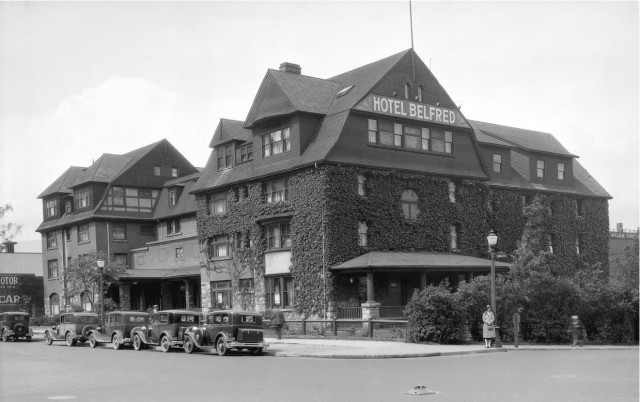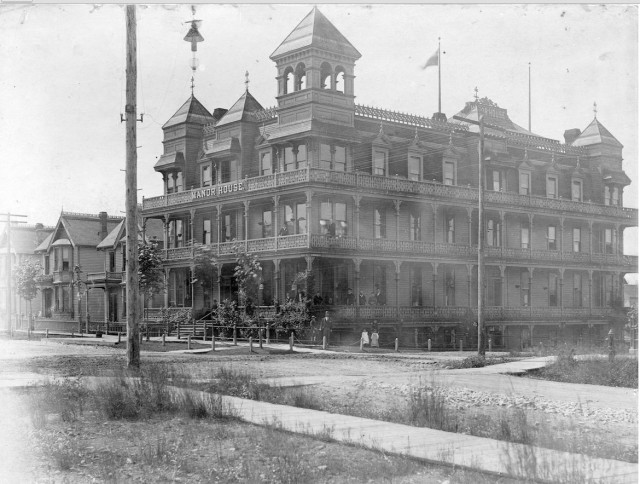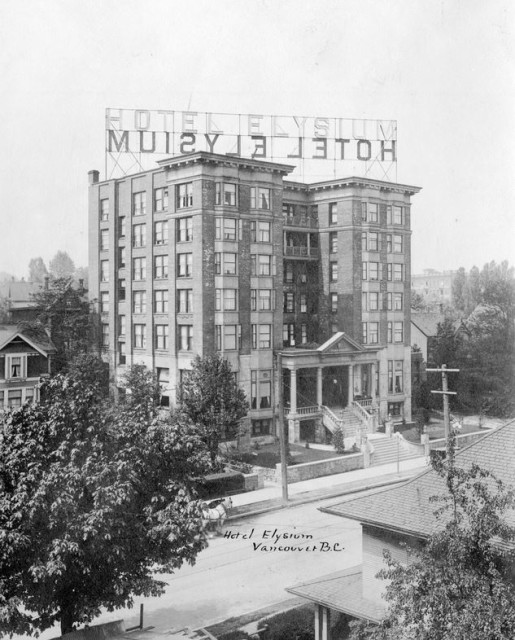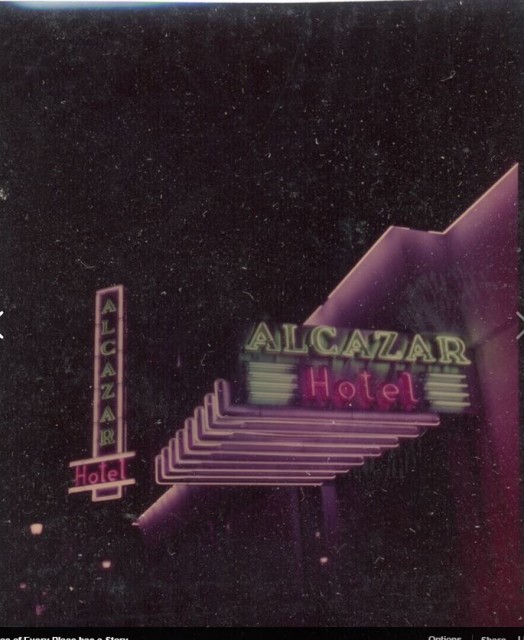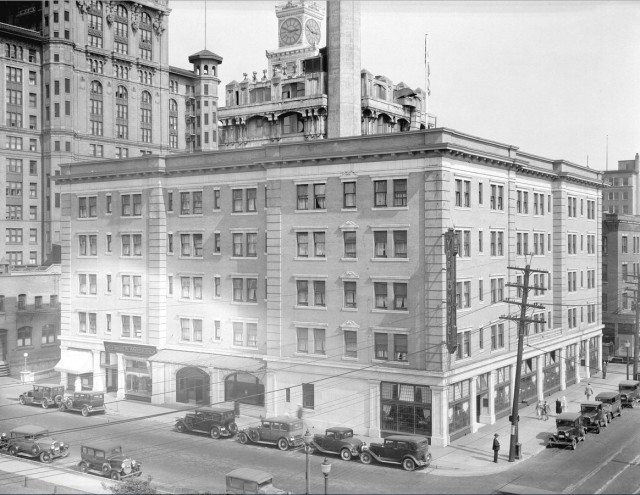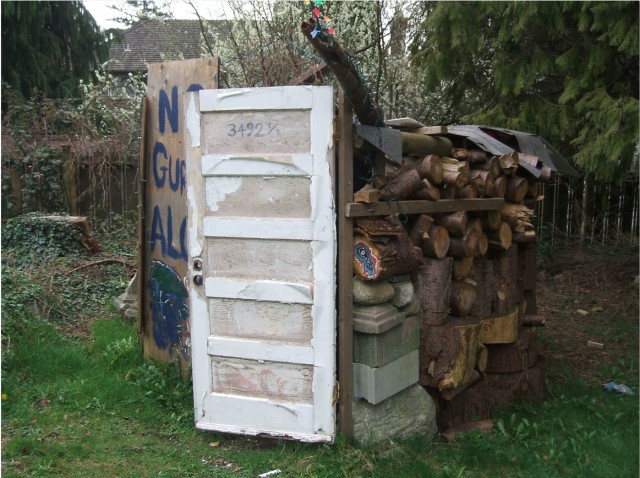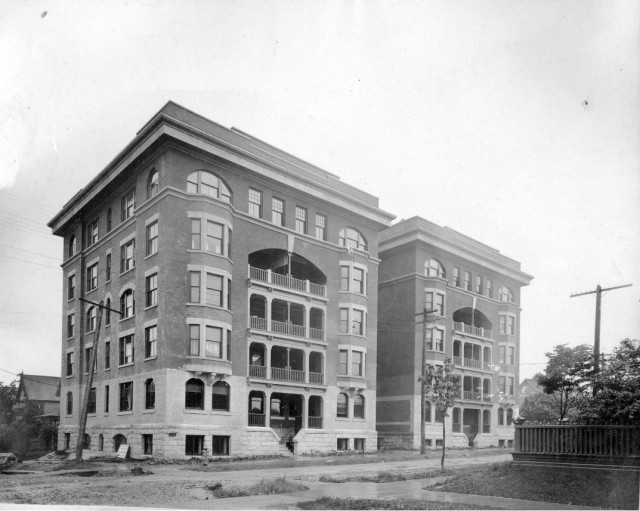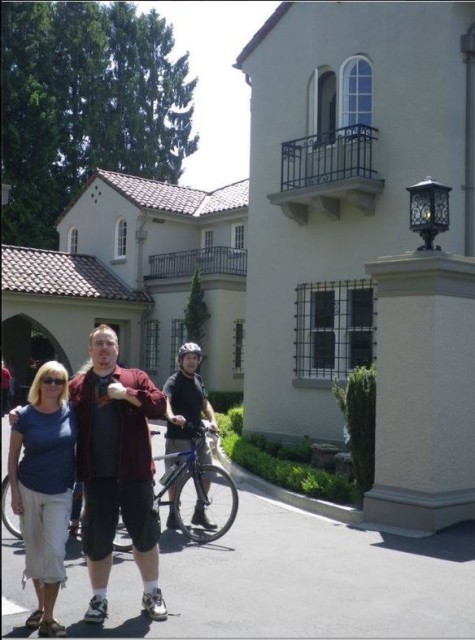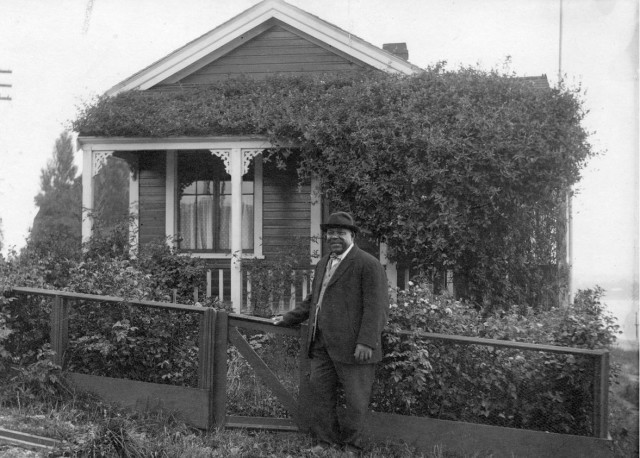The Glencoe Lodge opened at the corner of West Georgia and Burrard Streets in 1906. Sugar baron, Benjamin Tingley Rogers had bought two houses, raised them, added two storeys and turned the building into a boutique hotel, operated by the fabulous Miss Jean Mollison.
Story from Vancouver Exposed: Searching for the City’s Hidden History
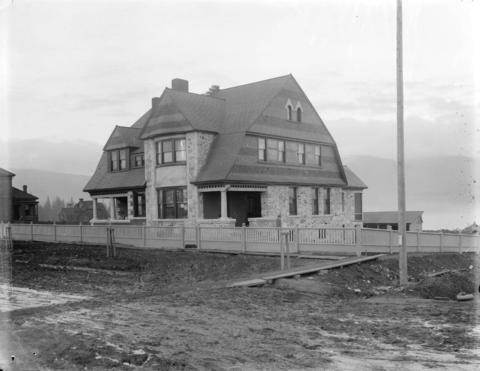
The Mollison Sisters:
Jean’s older sister Annie came to Canada from Scotland in 1888, armed with an introduction to the head of the CPR. Still in her early twenties, Annie became the first manager of the railway’s new Banff Springs Hotel. Jean became her assistant. It wasn’t long before Jean was sent to manage the Fraser Canyon Hotel at North Bend and later Lake Louise, while Annie opened CPR hotels at Field, Emerald Lake, Yoho, and Glacier.
Under Jean’s management, the CPR’s hotel at Lake Louise grew from a small chalet to a hotel with 200 rooms. She told a Province reporter: “The last two years I was there they would sometimes wire me from Calgary that there would be 1,500 people coming for lunch, many of them to stay the night and we had to rig up many curtains behind which the overflow could sleep.”
Named after home town:
BT Rogers wanted Jean Mollison to run his hotel. To sweeten the deal, he threw in three months of free rent and $20,000 to furnish it. Jean named the hotel after the village she came from in Scotland. She often arranged and sang at concerts for the guests—many who lived there while their houses were being built and others who made it their permanent residence.
Tom Roberts tells me that his grandmother Agnes Strain arrived in Vancouver from Scotland in 1912 and worked as a housekeeper at the Glencoe. Her daughter Margaret, Tom’s aunt, who at age 11, was known as the “wonder child,” often accompanied Jean on her flute at recitals, when the little girl wasn’t on the vaudeville circuit. Tom says his grandmother told him that Miss Mollison treated her like family and often gave her things. The family, he says, still has a set of cups and saucers with the Glencoe Lodge insignia.

The Belfred Hotel:
By 1931, the Depression was in full swing and Miss Mollison lost the lease. The Glencoe became the Belfred Hotel, but failed to rally under its new management, and the building was demolished that year.
The site stood empty for a couple of years until Standard Oil Company took up the lease, and remained until 1969 when it was demolished to make way for the Royal Centre.
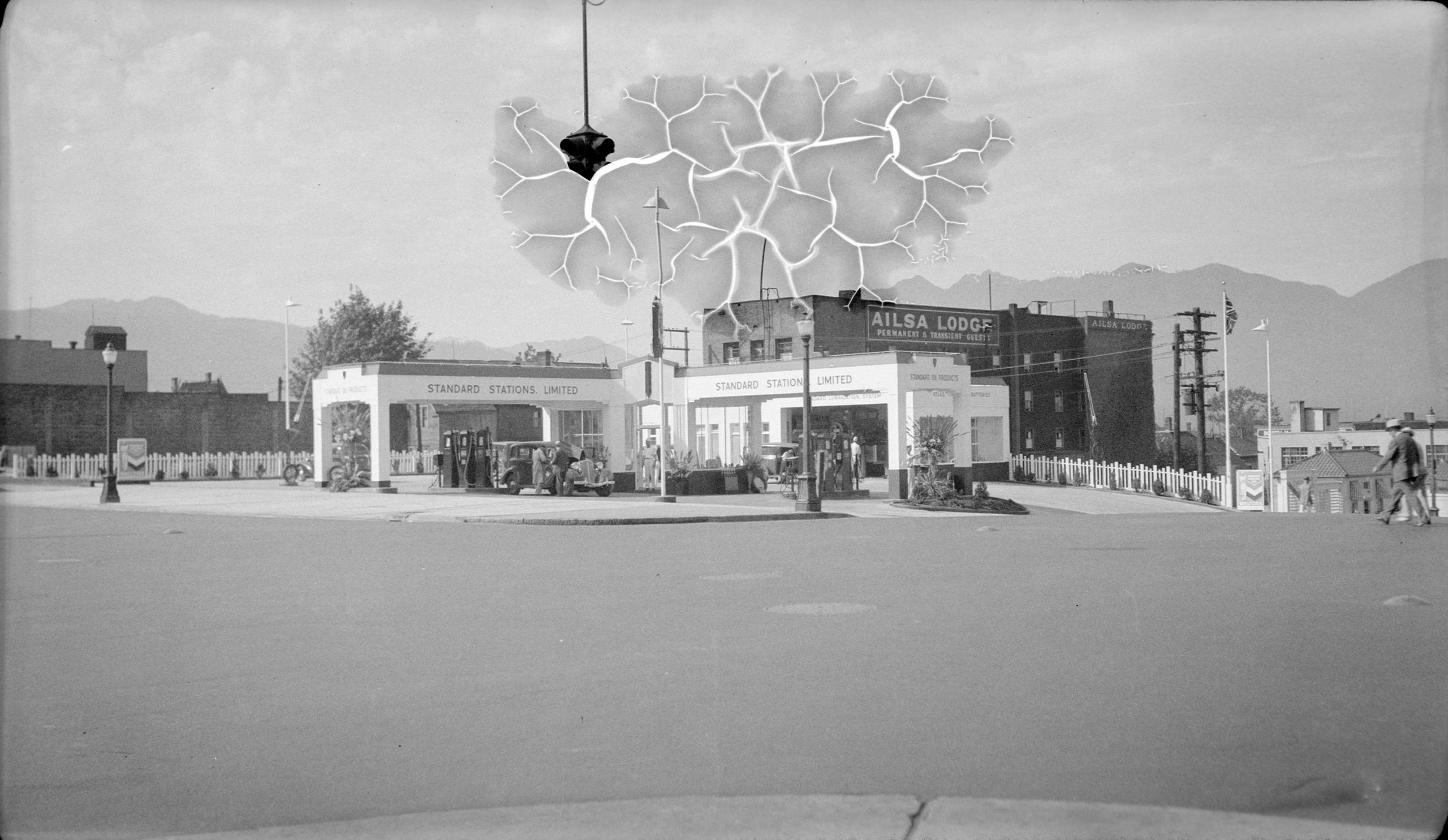
As for Jean Mollison, she promptly opened the New Glencoe Lodge at 2020 Barclay Street. It also struggled during the Depression, and she moved to smaller digs on Davie Street and started the Glencoe Coffee and Novelty Shop, where she specialized in her famous Glencoe ginger cake and scotch short bread. She died in 1951 aged 82.
BC’s Mount Mollison is named for Jean and Annie
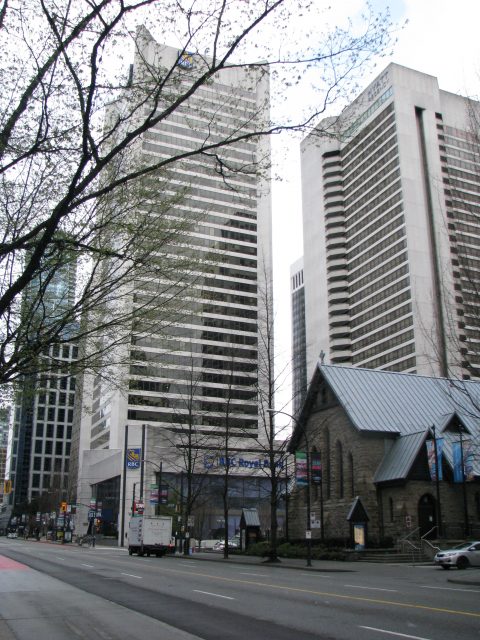
Related:
© All rights reserved. Unless otherwise indicated, all blog content copyright Eve Lazarus.




